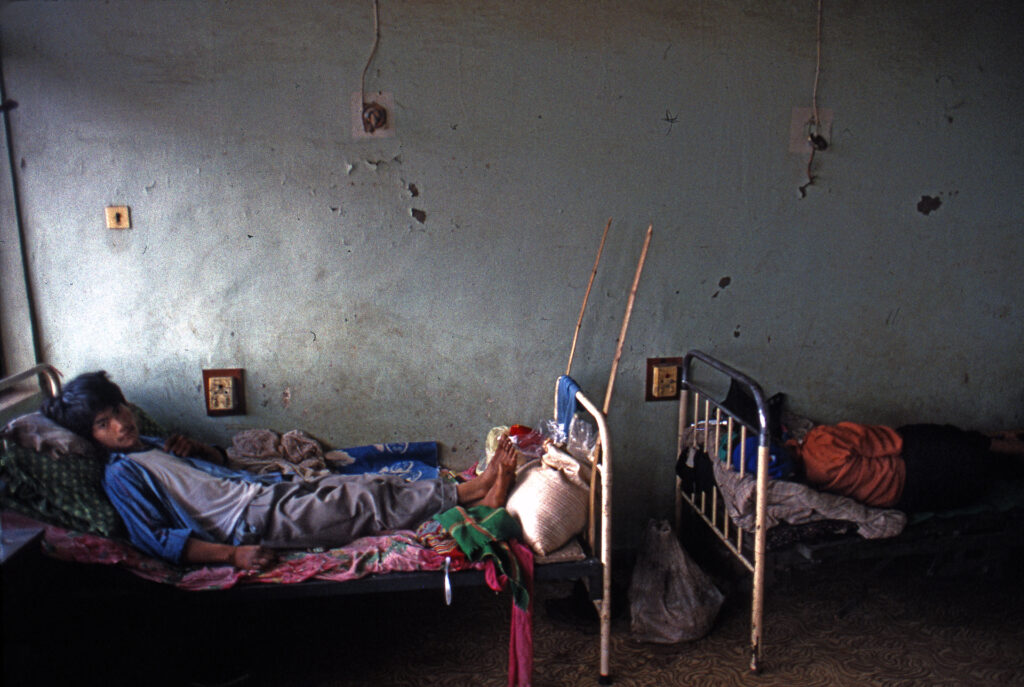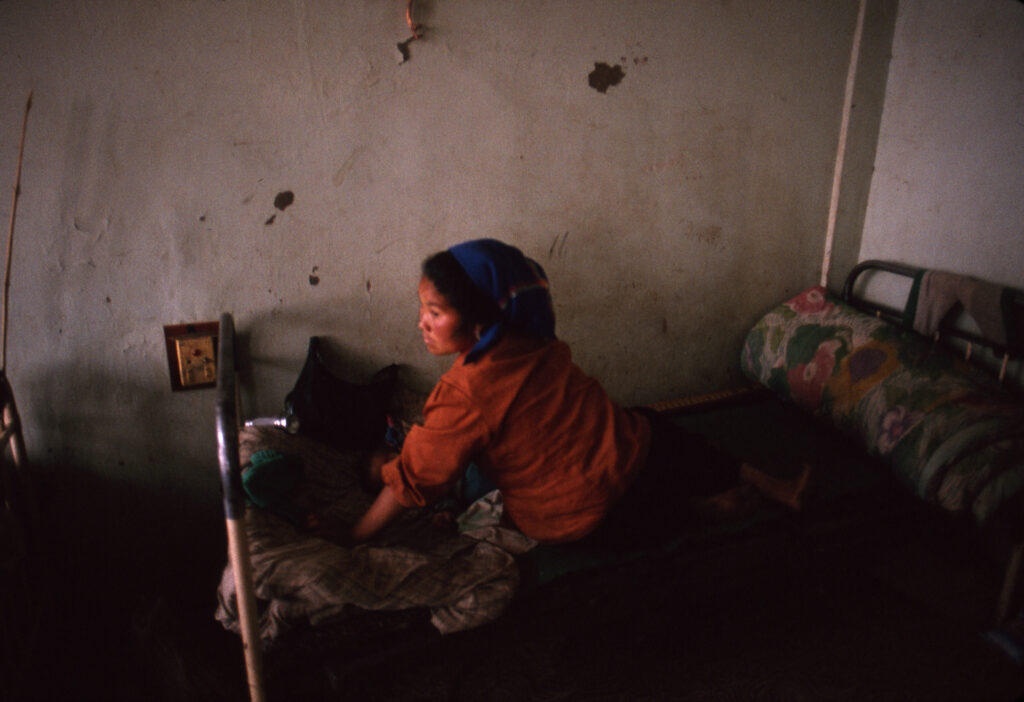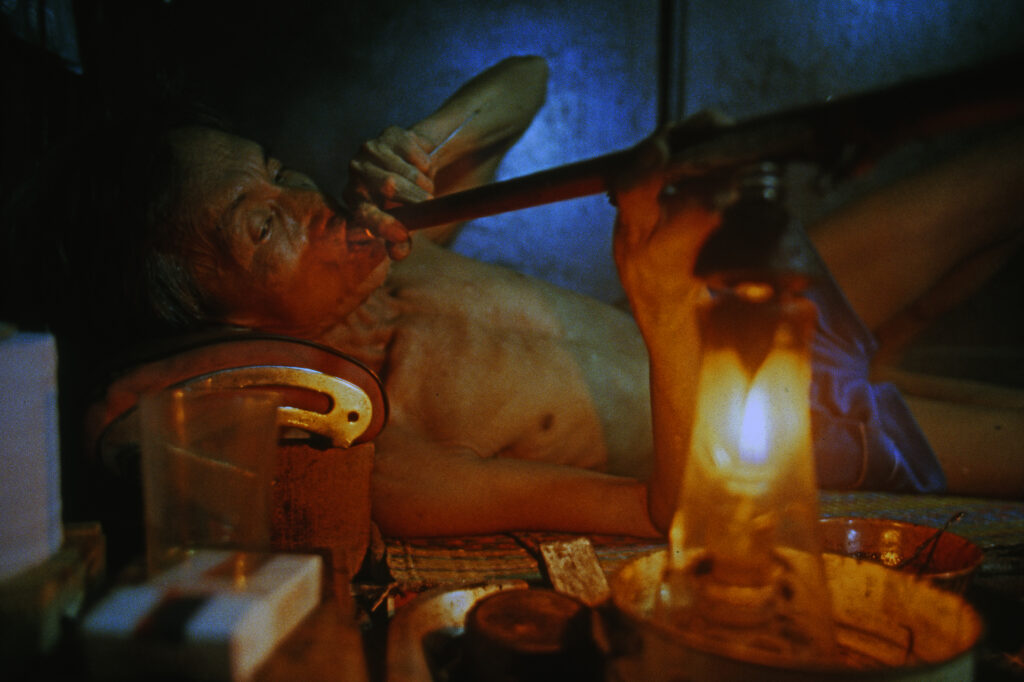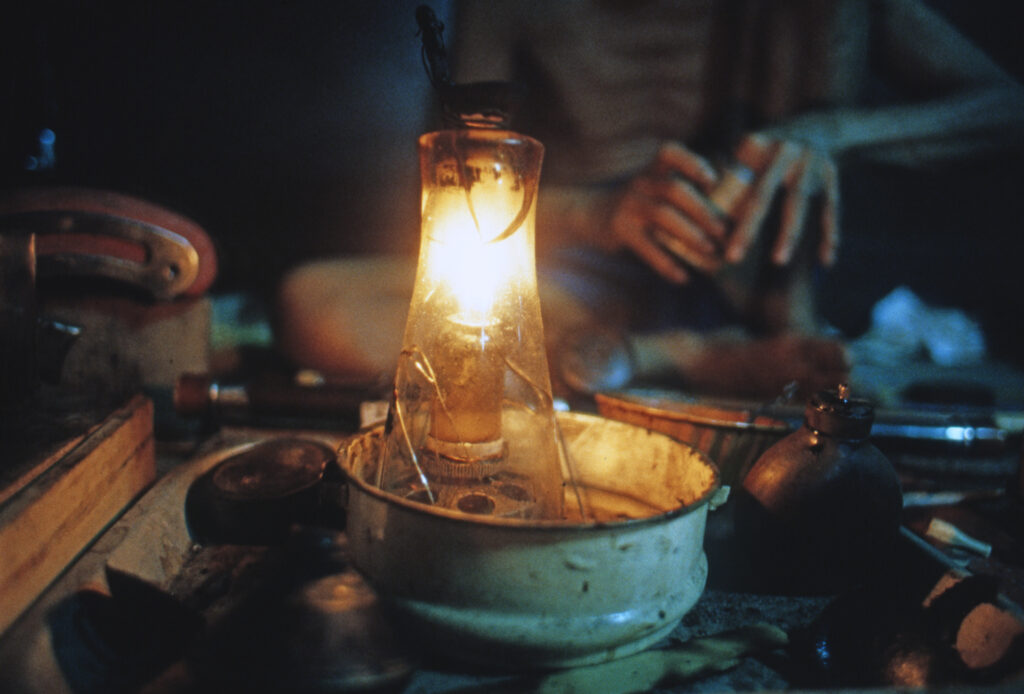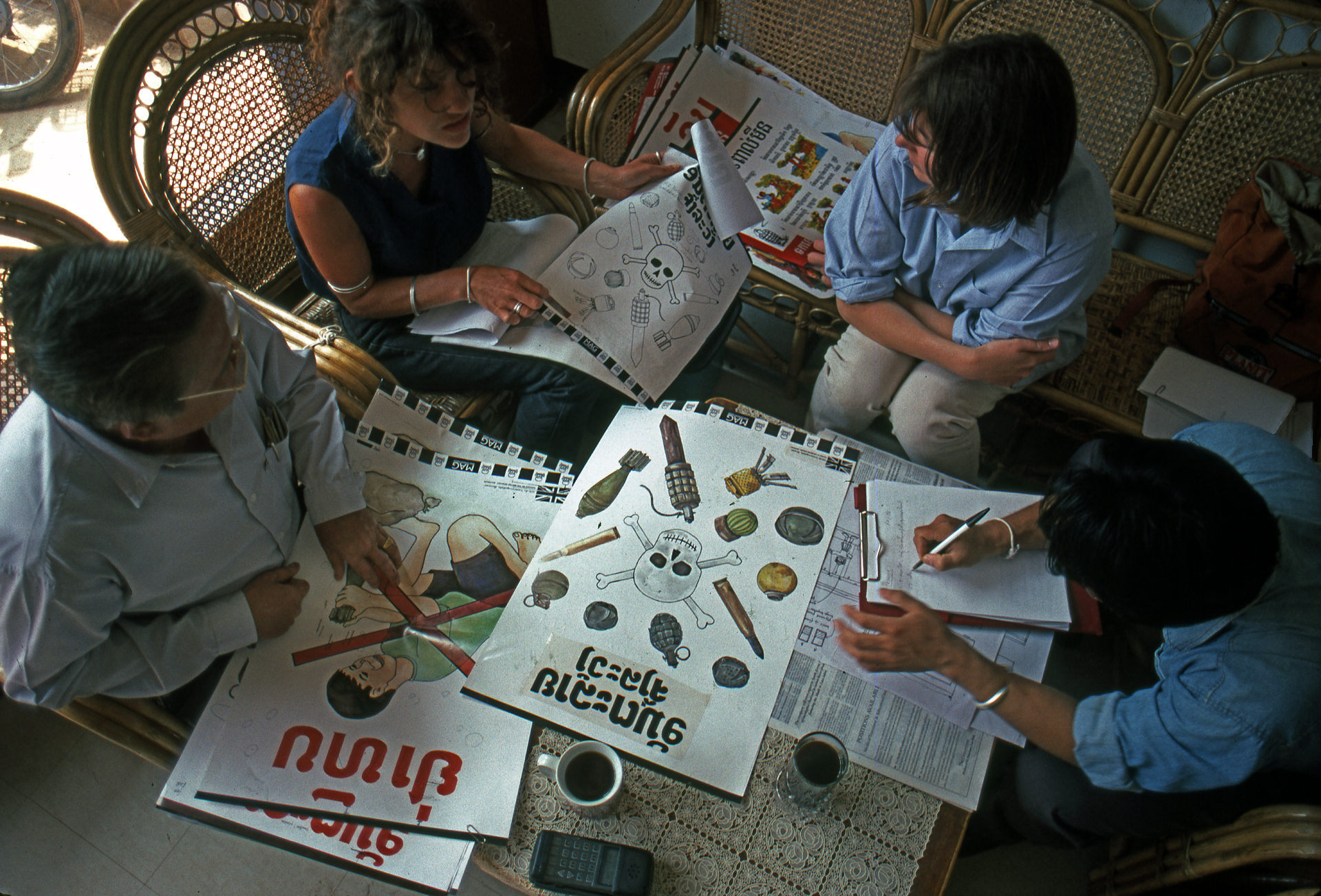UXO’s in Laos
The smell of urine and infection pervades the Phonsavanh Hospital in Xieng Khouang Province, Laos. In the “maternity ward” a graying young women lies bundled in worn blankets, motionless, staring despondingly into a bleak room. Her sister stays with her in the next bed, and tells us that the women lost her baby in birth. In another room another women tries desperately to breast feed a screaming malnourished one-year-old baby diagnosed with dysentery. The baby has no weight left to loose. One good thing about this hospital is that it isn’t crowded, at least not today.
Down the hall are two other kinds of victims. On top of poverty they have been wounded from “bombies” or “cluster bombs” that have remained lethal long after the U.S Airforce dropped millions of them on Laos, specifically on the Ho Chi Minh Trail, – every eight minutes for nine years, – or two tons of bombs per person, – or $10 billion worth.
In one room lies “Luha”. He is 28 years-old and his body is riddled with tiny black holes, that match many of the 300 ball bearings that exploded off the aluminum casing of the bombie that his hoe struck while working his field. Across the hall in another room lies nine-year-old Thao Khnonkham. He was playing and touched a bombie that tore into his stomach and the rest of his body.
Bombies have been found just about everywhere in Laos, including schools, roads, homes, farm land, watering holes, irrigation trenches, and temples. It seems that they have become just another commonplace hazard that kills or maims an estimated 100 people a year, according to initial surveys taken by MAG in a number of districts in Xieng Khouang province.
Here more than half of the people blown open by these tennis-balled size winged little spheres, are children. Five to six-hundred of these balls were delivered in each of the million or so anti-personal cluster bomb canisters deposited on Laos. They were designed to explode on or shortly after impact, but “up to 30% of them didn’t explode”, says Ian Mansfield, the U.N.’s top UXO expert in Laos. Ironically, in some areas, old bomb craters have become fish ponds. Projects that UNDP/FAO encourages and supports. The fact remains, however, that an estimated 50,000 hectares of agricultural land in Xieng Khouang province is regarded as unusable. No surveys have been done for the rest of the country.
The first outsiders to take notice of this problem were the Mennonites, as early as 1975. For a time, the Soviet Union also sent advisors. A tractor designed to flail and explode bombies failed to do the job. The Mennonites managed to convince many farmers that shovels were safer for digging in bombie infested soil, than hoes. Then in May, 1993, they hired the British de-mining NGO, Mines Action Group, MAG, to work on community education programs and to supply the training and technoloby necessary to clear unexploded ordanance in Xieng Khouang province. To date MAG has destroyed 9009 items of ordnance, (5060 bomblets), but the work is very slow. For every square meter of land scanned with a metal detector, they need to dig investigation trenches 3 to 7 times. Difficulties affecting rates of clearance are compounded when bomlets are found close to houses.
“Twelve of Laos’ seventeen provinces suffer from the dangers of unexploded ordnance,” says Ian Mansfield – the coordinator of the first joint United Nations and Government steering committee to tackle the job of clearing these and other UXO’s in all of Laos. He comes from four and one-half years of spearheading the United Nations landmine clearance initiatives in Afghanistan. One of his first tasks here will be to implement a national survey to determine the scale of the UXO problem. He sees the work that MAG has done in the last fifteen months as a model applicable to the rest of the country. He also has the full support of UNDP’s Jan Matheson, who has, against all odds, pledged to eliminate poverty in Laos, and who knows well the social and economic costs of unexploded ordnance that pollute Laotian land. “We have adapted to the Lao way of doing things… organizationally we need to help the government find the right size of program that is appropriate to the funding, so we won’t be laying people off in a few years”, says Mr. Matheson. The depth of his concern for Laotians surfaces when he says that “For many children here the war hasn’t stopped,” and glances quickly to the floor to wipe tears from his eyes. It remains to be seen how this $2.5 million trust fund (plus 2.7 million ‘in kind’ donation for the U.S.), will be applied to one of the world’s most forgotten disasters.
